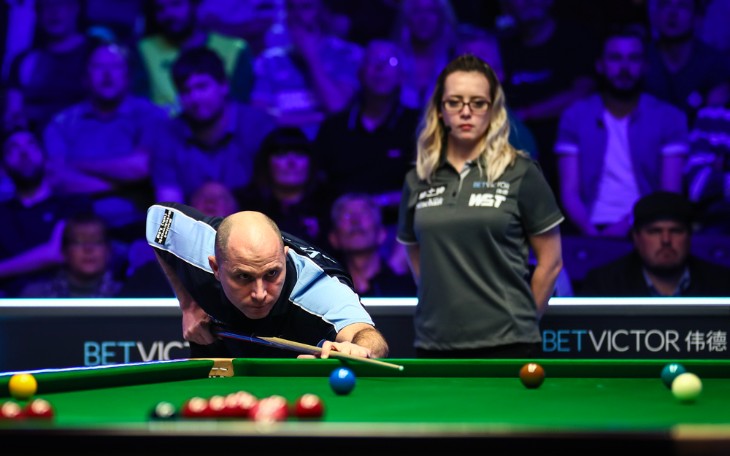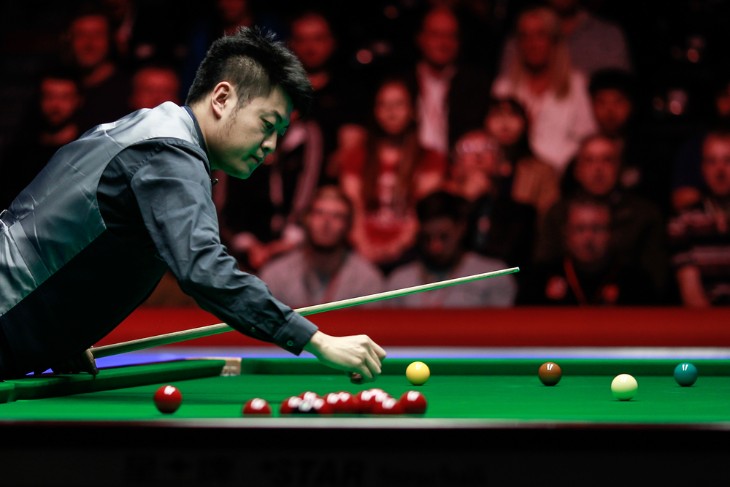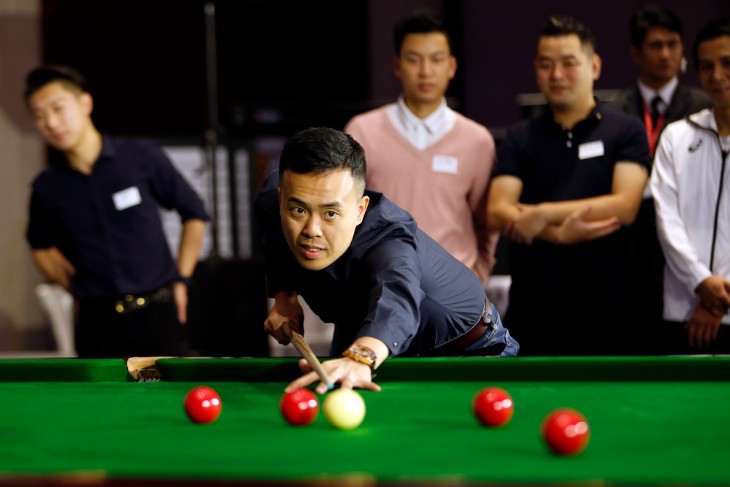Snooker, a game often synonymous with skill, precision, and strategy, also has a flamboyant side – trick shots. These shots, which seem to defy logic and physics, are not just showpieces but also gateways to understanding the fascinating interplay of physics in snooker. "Snooker Trick Shots:
Understanding the Physics Behind Them" aims to unravel the science behind the seemingly magical feats on the green baize. This article provides insights into the physics that make snooker trick shots both possible and mesmerising.
The Basics of Physics in Snooker Trick Shots
The Role of Force and Momentum in Snooker Trick Shots
In the realm of snooker trick shots, understanding force and momentum is fundamental. Here's how they synergize to create stunning shots:
Force is the player's tool to hit the cue ball, akin to the strength used in throwing a ball to a target. The right amount of force dictates the ball's speed and distance. In trick shots, precision in applying force is vital. Overpowering or underpowering your shot can lead to miscalculations, affecting the ball's intended trajectory.
Momentum takes over once the ball is in motion. It's the ongoing movement of the ball post-impact. In trick shots, planning for the ball’s trajectory post-hit is as crucial as the initial strike. The trick lies in predicting and utilizing the ball's momentum to navigate around the table, achieving the desired end position.
Mastering trick shots in snooker involves a delicate balance of force and momentum. It's about hitting the ball with the right force and understanding how this force translates into momentum. This combination is what enables the ball to perform complex maneuvers, such as curving past obstacles or returning to the player. Essentially, force and momentum act as the dynamic duo, guiding the cue ball in a carefully choreographed dance across the snooker table.
Spin and Its Effects in Snooker Trick Shots
Spin, a pivotal aspect of snooker trick shots, involves the rotation of the ball post-impact. Here's how spin alters the dynamics of the game:
When striking the cue ball off-centre, it induces spin. This spin can drastically alter the ball's path, causing it to curve, halt, or even reverse direction post-collision, akin to spinning a football.
Types of Spin:
- Topspin accelerates the ball forward post-impact, aiding in navigating the table.
- Backspin, or screw, has the opposite effect, potentially halting or reversing the cue ball's direction.
- Side spin causes the ball to veer left or right, ideal for circumventing obstacles.
Spin in Action: Employing spin in trick shots can be spectacular. For instance, curving the ball around another to pocket it, or using backspin to draw the cue ball back towards oneself post-impact. These shots not only look remarkable but can also catch an opponent off guard.
Mastering Spin: Achieving the perfect spin is challenging and demands practice. It's about striking the ball precisely and with the correct force. Excessive spin can lead to loss of control, while insufficient spin might not produce the desired effect.
Spin is the essence of what makes snooker trick shots thrilling. It introduces a new dimension to how the ball behaves on the table, offering a variety of techniques to make the ball perform impressive feats. While mastering spin is a practice-intensive process, its proficiency can significantly elevate your snooker game, making your shots more dynamic and noteworthy.

The Impact of Friction on Snooker Trick Shots
Friction is a big part of snooker trick shots. It affects how the ball moves on the table. Let's look at the role of friction in these shots.
Friction happens between the ball and the table cloth. It slows down the ball as it moves. In trick shots, controlling this slowing down is important. If you want the ball to stop quickly, you need more friction. If you want it to keep moving, you need less. It's like sliding something across a floor. The rougher the floor, the sooner it stops.
In trick shots, friction can help or hinder you. For a shot where the ball needs to stop near a pocket, friction is your friend. It helps the ball slow down and stop where you want. But if you're trying to make the ball travel far, too much friction can be a problem. It might stop the ball before it reaches the target.
Adjusting your shot for friction is a key skill. You need to hit the ball harder if there's a lot of friction. This gives it enough speed to reach the target. If there's less friction, a lighter hit might be better. The ball will keep rolling without too much help.
Understanding the table's condition helps with this. Newer tables with smoother cloth have less friction. Older tables with rougher cloth have more. Knowing this can help you decide how to play your shots.
Friction has a big impact on snooker trick shots. It changes how the ball moves on the table. You need to understand and control friction to make your shots work. It's a bit like driving a car. You need to know when to speed up and when to slow down, based on the road's condition. In snooker, the table is your road, and friction is what you're dealing with.
Advanced Physics Concepts in Spectacular Snooker Trick Shots
The Role of Angular Momentum in Complex Trick Shots
Angular momentum is a fundamental element in executing some of the most spectacular snooker trick shots. It revolves around the spin of the ball and its effects. Let's delve into how it influences complex shots:
Initiating Angular Momentum: Striking the cue ball off-centre imparts spin, or angular momentum. This spin enables movements beyond the capabilities of a straight hit. For instance, the ball can curve or leap over other balls, similar to the way a basketball spins on a finger. The spin direction influences the ball's motion.
The 'Masse' Shot: A quintessential trick shot utilizing angular momentum is the 'masse'. In this shot, the cue ball is hit with significant spin, causing it to travel in an arched trajectory instead of a straight line. Precision in hitting the ball is crucial to achieve the desired curvature.
The 'Jump' Shot: This shot involves striking the cue ball from above, imparting a downward spin. This action causes the ball to momentarily 'jump' off the table surface, clearing other balls in its path. It resembles a miniature leap, requiring exactitude in angle and force.
Utility in Subtle Shots: Angular momentum isn't just for showy shots; it's equally useful in simpler plays. It can be employed to control the cue ball's post-impact behavior, such as making it stop abruptly or move in a specific direction.
Angular momentum is a key player in complex snooker trick shots. It governs the ball's spin, influencing its ability to curve, jump, or halt. Mastering angular momentum not only enhances precision in shots but also expands the range of possibilities on the snooker table, adding an array of strategic tools to a player's arsenal.
Energy Transfer in High-Impact Trick Shots
Energy transfer plays a crucial role in the execution of high-impact snooker trick shots. It involves the movement of energy from the cue ball to other balls upon impact. Here's a closer look at how this concept is applied in snooker:
Initial Energy Transfer: When the cue ball is struck, it receives energy from the force of your shot. The velocity of your hit determines the amount of energy imparted. In trick shots, this energy is harnessed to accomplish various feats, such as potting multiple balls in a single stroke or causing a dispersal of balls in varied directions.
Potting Multiple Balls: In trick shots designed to pot several balls, the energy from the cue ball is sequentially transferred to other balls, akin to a chain reaction in dominoes. Each ball in the sequence receives a portion of this energy, propelling it into motion. The key lies in striking the cue ball with precise force and angle to direct the energy flow as desired.
Scatter Shots: These shots involve striking the cue ball with considerable force into a cluster of balls, leading to a 'scatter shot'. The cue ball's energy radiates outward upon impact, causing the balls to scatter in various directions, reminiscent of an explosion. This type of shot is visually striking due to the dynamic dispersion of balls.
Energy in Jump Shots: Jump shots utilize energy transfer in a vertical direction. Striking the cue ball from above transfers energy downwards, causing the ball to leap off the table surface. This is similar to the principle of bouncing a ball on the ground; the greater the force, the higher the jump.
Energy transfer is the linchpin in high-impact snooker trick shots. It's about using the energy from your shot to manipulate the balls in creative ways, whether for potting, scattering, or jumping. Mastering energy transfer can transform your snooker trick shots, making them more dynamic and impressive. It's like wielding magic with your cue stick, where the energy becomes your spell to enchant the game.
The Principle of Conservation of Momentum in Trick Shots
In snooker trick shots, the principle of conservation of momentum plays a pivotal role. This principle deals with the preservation and transfer of momentum, essentially the movement energy, within the game. Let's explore its application in trick shots:
Momentum Transfer: In snooker, when a ball is struck, it gains momentum. This momentum isn't lost; instead, it is transferred when the ball collides with another. Comparable to a baton in a relay race, the speed isn't lost during the handover; it merely passes to the next runner.
Moving Several Balls: This principle is utilized in trick shots to maneuver multiple balls. For instance, striking the cue ball to pocket another involves transferring the cue ball's momentum to the target ball, propelling it towards the pocket. The key lies in striking the cue ball with the appropriate speed and angle to correctly transfer momentum.
Complex Shot Dynamics: In more intricate shots, the cue ball may hit one ball, which in turn hits another, creating a chain reaction. Each ball in the sequence receives a portion of the momentum, initiating movement. Planning such shots requires careful consideration of how momentum will be relayed from one ball to the next.
Halting the Cue Ball: There are scenarios where the intention is to stop the cue ball post-collision. This too revolves around momentum. The aim is to strike in a manner that allows the cue ball to transfer most of its momentum to the other ball, thereby slowing down and coming to a halt.
The principle of conservation of momentum is a cornerstone in the art of snooker trick shots. It revolves around strategically passing movement energy from one ball to another. This principle is central to moving balls, potting them, and orchestrating the overall flow of the game. It's akin to solving a dynamic puzzle, where planning the trajectory and momentum transfer of each shot can significantly elevate the success and allure of your trick shots.

Practical Tips for Mastering Snooker Trick Shots
Practice and Precision: The Key to Perfecting Trick Shots
Practice and precision are crucial for mastering snooker trick shots. It's all about repeating your shots and getting them just right. Let's dive into how practice makes perfect in trick shots.
Practice helps you understand how your shots work. Every time you hit the ball, you learn a bit more about how it moves. This is important for trick shots, which can be complicated. You need to know how hard to hit the ball, where to hit it, and what angle to use. Practising helps you figure this out. It's like learning to ride a bike. The more you do it, the better you get.
Precision is also key. This means hitting the ball exactly how you want to. In trick shots, being even a little bit off can mean missing your shot. You need to be very precise. This comes with practice. The more you play, the better you can hit the ball just right.
Practising also builds muscle memory. This means your body remembers how to do the shots. When you've practised a lot, you don't have to think so hard about each shot. Your body knows what to do. It's like typing on a keyboard. When you're used to it, you don't have to look at the keys.
Practising a lot and being precise are essential for good snooker trick shots. You need to understand your shots, hit the ball just right, and build muscle memory. It takes time and effort, but it's worth it. Good practice can turn a tricky shot into something amazing.
Observation and Learning: Watching the Experts
Watching expert players is a great way to learn snooker trick shots. It's about seeing how the pros do it and picking up tips. Let's look at how watching others can help you improve.
When you watch expert players, you see how they handle different shots. You can learn a lot from this. They might use a shot you've never tried or handle a tricky situation in a clever way. It's like watching a chef cook. You pick up new recipes and techniques.
Paying attention to how experts use spin, force, and angles can be really helpful. You can see how they hit the ball to make it spin a certain way or how they use angles to pot difficult balls. It's a bit like learning from a teacher. They show you how to do something, and you try to copy it.
Watching snooker matches and tutorials online can be a good way to learn. There are many videos where experts explain how to do trick shots. They might give tips on how to position your cue, how to stand, or how to hit the ball. It's like taking a class, but you can watch whenever you want.
Watching expert snooker players is a great way to learn trick shots. You can see how they play, learn new techniques, and get tips on how to improve. It's an easy and fun way to get better at snooker. Just like learning from a pro in any sport, it can give you new ideas and help you sharpen your skills.
The Importance of Cue Control and Angle Judgment
Cue control and angle judgement are very important in snooker, especially for trick shots. Let's see why they matter so much.
Cue control means being able to move your cue exactly how you want. This is crucial for trick shots. You need to hit the ball in just the right place. If your cue control is off, your shot might not work. It's like drawing a straight line. If your hand shakes, the line won't be straight. Good cue control keeps your shots accurate.
Judging angles is also key. This means looking at the table and figuring out the best way to hit the ball. In trick shots, you often need to hit the ball at a special angle to make the shot work. If you get the angle wrong, the ball won't go where you want. It's like aiming in archery. You need to line up your shot just right.
Practising cue control and angle judgement can make a big difference. The more you practise, the better you get at moving your cue the way you want and judging the right angles. It's like practising any skill. The more you do it, the better you get.
Good cue control and accurate angle judgement are essential for snooker trick shots. You need to be able to move your cue precisely and judge angles correctly to make your shots work. These skills take practice to develop, but they're worth it. They can make your trick shots more successful and impressive.
Final Verdict
Snooker trick shots are not just entertaining; they are a showcase of the fascinating interplay of physics and skill. Understanding the principles of force, momentum, spin, and energy transfer can enrich one's appreciation of these shots and the game of snooker as a whole.
Whether you are a player aspiring to learn trick shots or just a fan of the game, acknowledging the science behind these spectacular shots adds an extra layer of awe and appreciation. Snooker, thus, stands as a testament to how sports can beautifully blend physical laws with human skill and creativity.
For more information:




.webp)


 (1).webp)




















